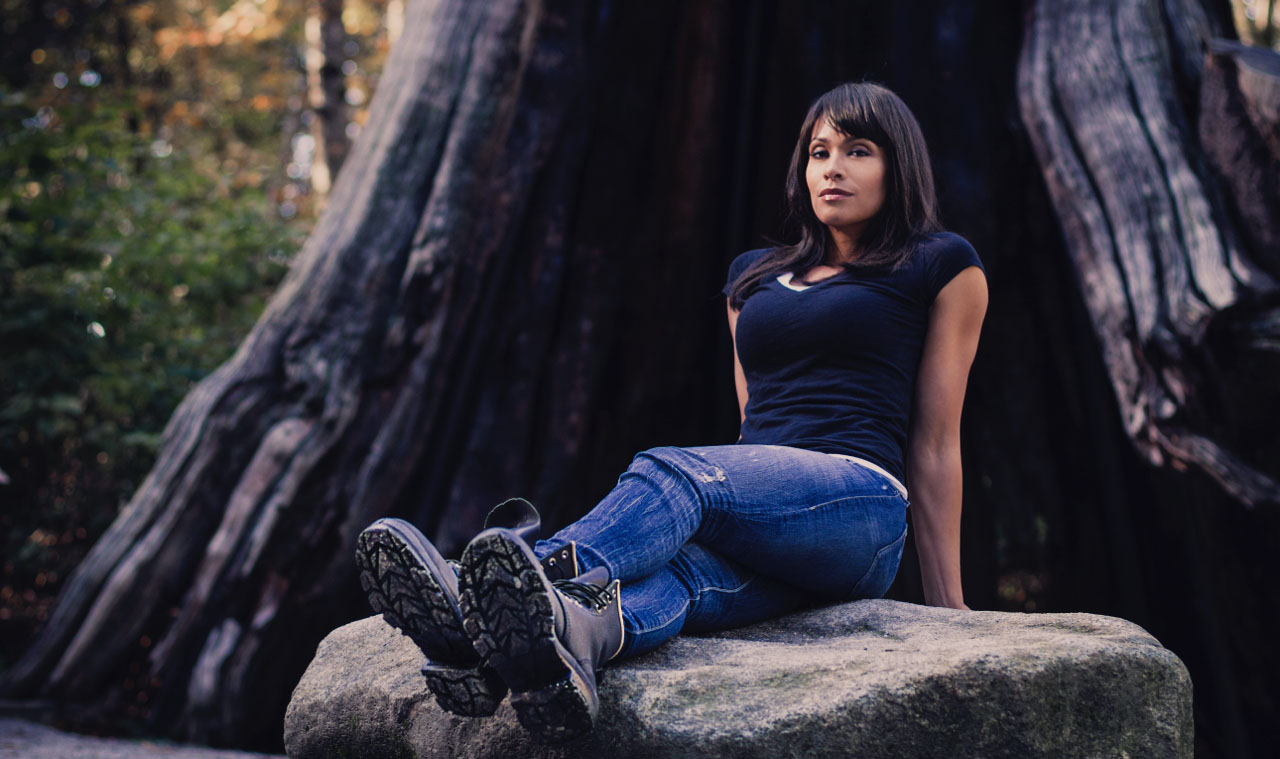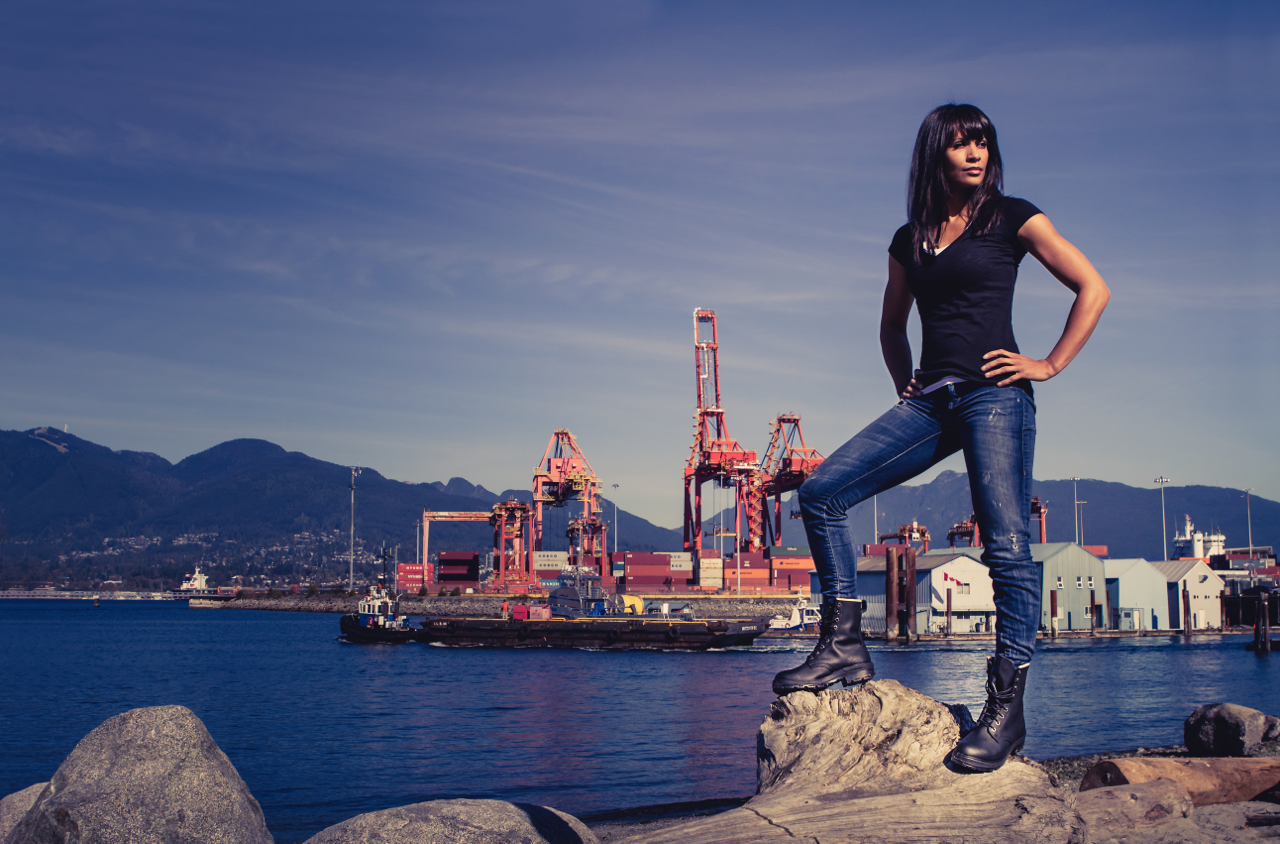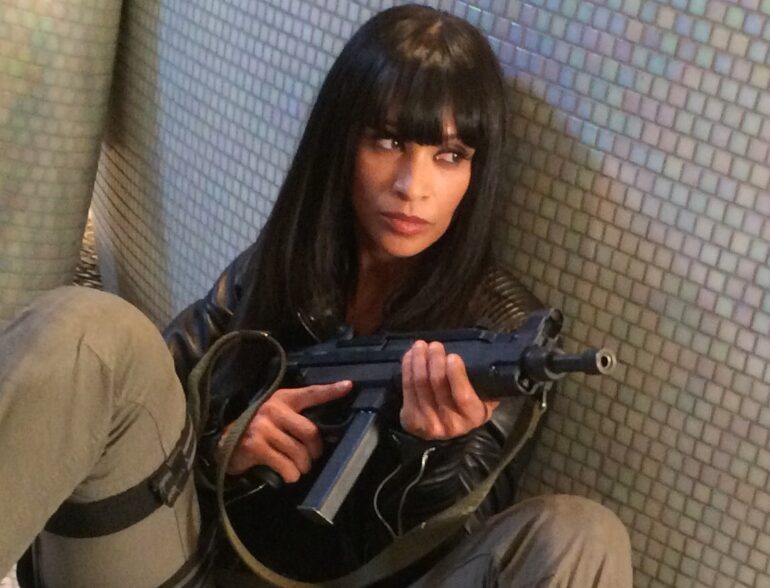Sharlene Royer is the Assistant Stunt Coordinator for the 25x Emmy-nominated series Shogun and CBS’s action-packed drama series Tracker starring Justin Hartley. She has also stunt doubled for numerous A-list actors, including Zoe Saldana, Halle Berry and Rosario Dawson. Sharlene stopped by to chat with us about her work on Shogun.
Congratulations on all the success of Shogun. It’s much deserved.
Oh, thank you so much. It was a nice ride and a great team.
You’re the assistant stunt coordinator on the show. Can you discuss the role the assistant stunt coordinator plays in the production? And also, what do you think the biggest misconceptions of the role are with people?
It all goes together. This is actually a good question, because often when I say I am a stunt coordinator’s assistant, people think that I am a secretary that brings the coffee like a personal assistant, and it’s not the case. An assistant stunt coordinator is also a stunt coordinator. So basically, it’s like I have my boss who is the stunt coordinator, supervisor, stunt coordinator/second unit director and those guys are busy covering a lot of ground. I’m there to pick up the pace on where he cannot be. If he cannot be at one spot that day, I’m going to be there covering for him. I do a lot of paperwork as well. The booking, anything that is management paperwork. Yes, I do that. But I also do coordinating action design meetings, extract the action. I’m helping out for his job. For instance, if that day the stunt coordinator is being called to second unit direct, I will step into his shoes. Those are big shoes to fill up. Then I will assume his job basically, everything that he needs to do that day. So, I’m here to help out whenever. And also, I need to be up to speed with everything. I am his like right-hand person. Whatever question they need him to answer, if he’s not available, I need to be able to answer those questions as well. My background is stunt performer for many years, over 20 years and then I’m stepping up to being in that position.

I’ve spoken to quite a few stunt coordinators and fight coordinators, but one thing they’ve never mentioned before was the paperwork aspect you mentioned a minute ago. Do you do things like budgeting and coordinating that? How does that work?
Well, it’s like basically you need to read the script, like obviously, right (laughs)? I need to extract all the action and put it into a breakdown and then do budgeting in regards of that. And then when we go through a meeting with the directors and producer and all the other departments, we are sharing what we have on the table. And if the budget permits, well, we’re going to plan it this way. If it doesn’t, we have to modify the action, according to the money that we have and then make it work for the vision of the director. Then there’s insurance because you need to explain “Yeah, we’re going to do it this way. It’s going to be saved that way because we’re going to use this, this, this and that performer with the right qualification, that equipment”. All those little things that you have to explain to production or insurance that it’s going to be safe. It’s still stunts, still a risk, but everything is calculated. If this happened, we plan all this have to be on paper. A lot of fun.
If an actor said, “I’d like to do all my own stunts”, is that kind of your worst nightmare because then that changes all the insurance and everything.
Oh, wow. I don’t know if an actor is going to like what I’m going to say (laughs). Okay. I’m going to be honest with you because it’s a truth. There’s only one Tom Cruise. All the others we need; there is a certain risk that we cannot take with them. Basically, we have to make sure that the actor is not getting hurt so we can finish the movie. It’s more important. We’re going to take certain risks, but up to a certain degree; if it’s going to put in danger with physical integrity, we’re going to put the stunt double in. Doesn’t matter. We have to, because this is a major responsibility to make sure that they are able to finish the shoot. There are certain things that we’re going to train them, like fight stuff or horseback riding, depending on their skillset and abilities, we’re going to assess them that’s for sure. It’s a case by case, if I may say. Some are more physical than others. Some are not physical at all (laughs).
Shogun has been a massive success. Can you discuss some of the main action scenes you worked on?
Well, I think the biggest sequence is… we have episode four where it was a multiple nine stuntman ratchet, as we call it; and a bunch of other fights toward episode 9 and 10, where we had to train actors to learn their fight as well. We had some guidelines that we had to respect in terms of authenticity of the martial art at that time. There was no flip. There was no like action hero type of thing. It was very basic into the samurai art of doing things. We had to tone down everybody. “No, no, no, none of that” and being specific. So, we had a few consultants as well on board. Translator, consultant from Japan, from United States, all kinds of people to assist with putting the action together. And the thing that really amazed me the most is at some point, because it was a busy time in the year when we shot that, and there were other shows we needed martial artists. We had to share those performers to come on the show, right? At some point, I don’t know how we managed to do that, but we had everybody available in town on the show. And it goes from the super high-skilled martial artist to the all-time, the stunt coordinator who decided that he’s going to come and play that day. It was amazing. There was about 25 and all I see is names from the Ninja Turtle people, from guys who work on The Last Samurai. It was amazing. I remember having the goosebumps and going like, “oh my God, this is historic what we’re having today”. Everybody came and wanted to help out with this adventure. It was amazing, basically. Everybody put what they got on the table to make this work and look authentic.
I’m loving seeing how more people from the stunt community are becoming filmmakers and it’s going back to real action. Hopefully stunts will be added to the Oscars soon. If someone said, “we’d like you to helm this feature film”, would that be something that would interest you at some point?
Well, I don’t know about the ultimate Oscar. I don’t want to talk with ego, but everybody would love that for sure. Because it’s more than just like kick and punch and everything; it’s putting on the table the art of putting action together that fit the story and that tell the story. You need to be just more than physical. You need to be well-rounded and have a big perspective of the entire picture, right? So, it’d be nice to be able to show to the world that action; it’s more than just fall down or fight. It’s actually the art of putting an action together and it look as real as possible and respect the story, right? It’s a vision. Each punch tells a story, right? So, it’d be nice to be able to show that to the world. Even a car chase tells the story when it’s well done. It’s more than just, right?
Yeah, exactly. Whenever I talk to stunt coordinators, it’s always stuck with me that every action scene should be a story in itself. There should be a beginning, middle and an end and it should be pushing the story or the characters forward. Would you say that’s true?
Yeah, yeah, yeah, totally, totally. It’s supporting the storytelling, totally.
How challenging is it to create action scenes that feel fresh and unique that we haven’t seen before?
Wow, that’s a hard question because everything has been done. It’s just your take, your angle on what has been done. You cannot reinvent a kick or a punch. Everything has been done, but it’s what makes an action sequence different than another or from a stunt coordinator to another; it is his vision on how he’s gonna tell it, right? So, that’s what makes us unique. But I know it sounds a little bit nebulous, but I don’t know if it makes sense to you, but to me it does; it depends on the angle of the person on what they decide to show to you. This is what makes things different, but you can say the same story a different way, a hundred different ways, but it’s still the same story, right?
Yeah. It’s like the saying “every story has been told, but not by you”.
Wow, well said, that’s it.
How do you know whenever you’ve found the right location for an action scene?
Well, there is nothing perfect. It’s always like, we’re gonna get to a location and we’re gonna be asked, can we make this work? Yes, we can make this work, but we will need this, so we always need to adjust so much. Our input is gonna be on what we need to make this work in this location. It will happen on rare occasions, where it’s totally impossible for this to work out because let’s say the weather is bad at that time of year – wind, depending what we have to do, right? So, weather can be a big aspect on things or the terrain on when it can not work. But in general, it’s rare. It’s our job to make this work and bring everything on the table to fix it. Problem solving.
What advice would you give to anyone who’s trying to break into the stunt community and film or TV?
Well, first off is train. Don’t listen to whoever tries to tell you it’s not for you, it’s complicated. When there is a will, there is a way, right? So, keep focused, but train. Never assume that you can do everything because we always learn. Along my career, I went and took classes and I never stopped, that it comes from motorcycles, driving, from horses, fighting, new styles of fighting, weapons. Keep those gymnastic skills going, be in shape because this is your business when you’re a stunt performer and never lie about your skills. Never lie about this. Be honest and a stunt coordinator will really appreciate that. They will keep you in mind because they can trust you. It’s a trust relationship basically. If you lie, the trust is gone. It’s gonna be hard to rebuild that. Be authentic and honest.

What are you working on next?
Oh, okay. So, Shogun 2 and 3 (laughs). It’s been confirmed and we’re gonna be on that. Basically, the trick is to stay busy but not too busy to make sure we get on time on the next part. I think this is our priority right now and we want to all work together again and keep going with the project and take off where we left off and take on the new adventure. I don’t know where it’s gonna be. And at the moment, we are doing a little project in Mexico City, just big enough. So in between those two seasons, it’s called El Gato Negro. It’s a Mexican Batman, if we want to call it like that. It’s a TV series. It’s interesting. There’s some cool stuff that we are able to pull off down there actually. And for sure, it’s another adventure where the language can be a barrier sometimes because it’s in Spanish and English. So now I don’t know which language I’m able to speak because I hear it all (laughs). And of course, we did take on a little personal adventure of producing our own little independent movie, a little small movie. So, there’s that. We keep busy. We managed to keep busy in between big project and having fun and evolve.
Thank you very much for taking the time to chat with me. All the best with your future projects.
Thank you so much for having me.






